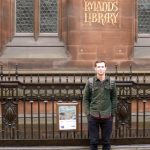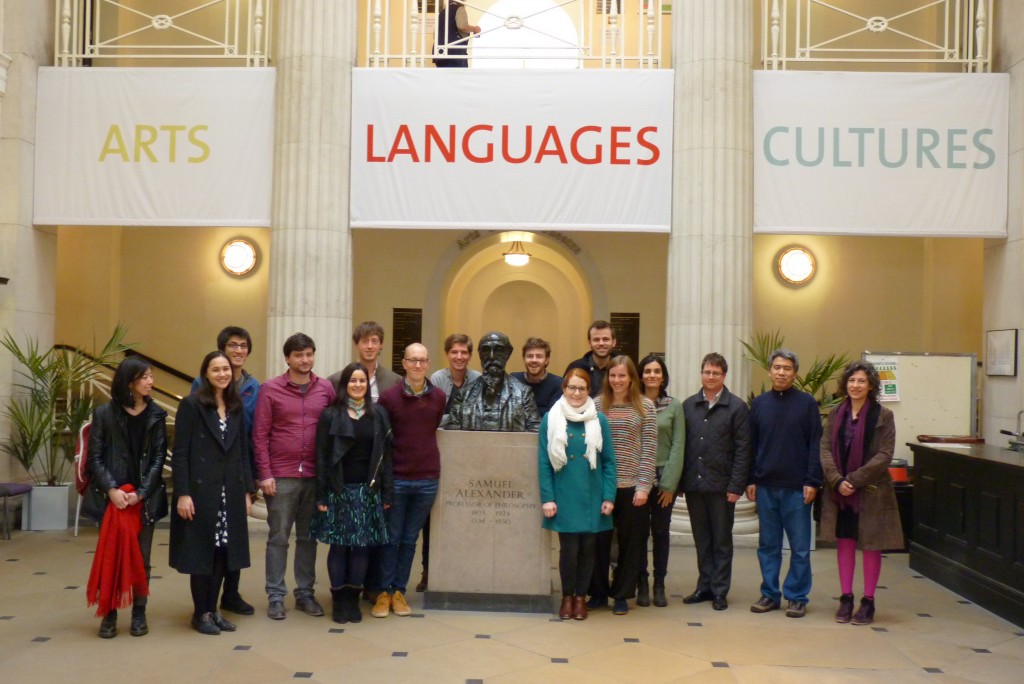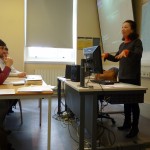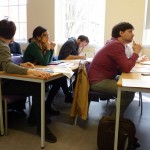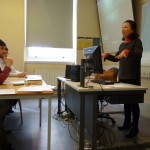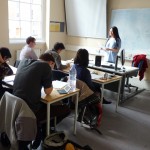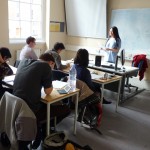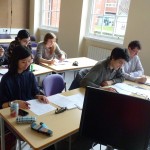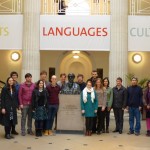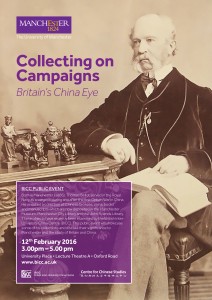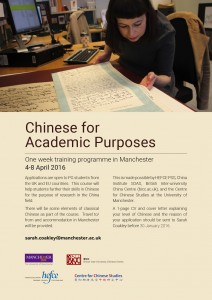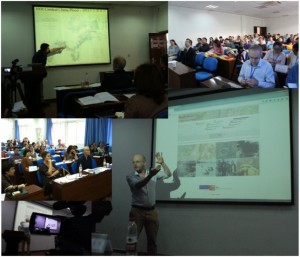Chinese propaganda posters and copyright
Dr Amy Jane Barnes
Following on from my last blog post , I can report that I have, bar a few queries, finished the catalogue of Chinese propaganda posters, or at least the catalogue in its most basic form. I am currently working on supplementing this data – title, format, measurements, condition, etc. – with research into each individual poster, with a view to augmenting the catalogue with some interpretative material. This research will also form the backbone of the academic papers I intend, in the near future, to write based on the collection.
One of the key activities that the British Library asked me to undertake, aside from compiling the catalogue, was to determine the copyright status of the collection, with a view to digitizing and making it available online to researchers worldwide. This has proven to be the trickiest and most frustrating aspect of the project. Many institutions have been happy to digitise and publish their collections of Chinese propaganda posters in print and online,* because, after all, as state propaganda, they were intended to be disseminated to the widest possible audience. And received wisdom tells us that enshrining and protecting individual artists’ intellectual property rights was not a key concern of the Maoist period. Right?
Well, no, as it happens. The reality of the situation is not quite so simple and straightforward. Although legislation may not have applied to propaganda posters at the point of their creation, in 1990 China enacted copyright laws, which were applied retroactively. Generally speaking, these laws assert that works remain in copyright for the duration of the author’s (or artist’s) life, plus 50 years. Or, should the item have been ‘authored’ anonymously or published on behalf of an organisation (say, for example, the Chinese state), copyright restrictions apply for 50 years from the year of publication to the end of the calendar year. This all means that, at the time of writing, anything published anonymously or on behalf of an organisation, before and including 1964, is out of copyright. But this does not include works by named artists (unless they died in or prior to 1964).
And works published after 1964 must be assumed to be in copyright. From 1 Jan 2016, copyright on works published in 1965 will expire, again assuming they are not by named artists working in an independent capacity or feature third party material – a further sticking point. According to advice received, in the case of film posters, which form a large part of the British Library’s collection, third party materials, such as film stills add an additional layer of complexity.
Given that the collection comprises material published between 1950 and 1982, and that a large number of the pre-1965 items in the collection either feature third party material or were produced by named artists, it isn’t difficult to understand just how complicated it has been to determine what is and what isn’t in copyright according to the 1990 law. As a result and erring on the side of caution, the original plan, to digitise and make the collection accessible online, has been abandoned, at least for now. And also explains why this blog post isn’t illustrated with any images!
However, it has been possible to publish a few examples of older posters in the collection on the British Library Asia and Africa blog, because, in the terms of the 1992 legislation they are out of copyright. For example, a film poster comprising an anonymously painted image and text (but no film stills) dated to 1959, and several examples of nian hua (New Year prints) from 1950, soon to be posted to the blog. The latter are by named artists, but as i) I have been unable, despite extensive research, to locate any further details about the artists in question, such as their dates; and ii) it can be argued that the artists in question were considered to be employees of the state and not working independently when they were sent out to the countryside to make their prints, these examples of nian hua can safely be considered ‘out of copyright’.
In my next and final blog for the BICC website, I will provide an overview of the collection and my findings. In the meantime, for more about my research, please see the Asia and Africa section’s blog on the British Library’s website.
Amy Jane Barnes (Dr)
Many thanks to Matthew Lambert, Copyright Assurance and Licensing Manager of the British Library’s Publisher Relations, IP and Licensing Section for his expert advice.
*Or, they are of the opinion that the risk is minimal and acceptable. There is no doubt that the British Library, as an national institution closely identified with the British state, has to play it by the book (no pun intended!) when it comes to such tricky legal matters.

